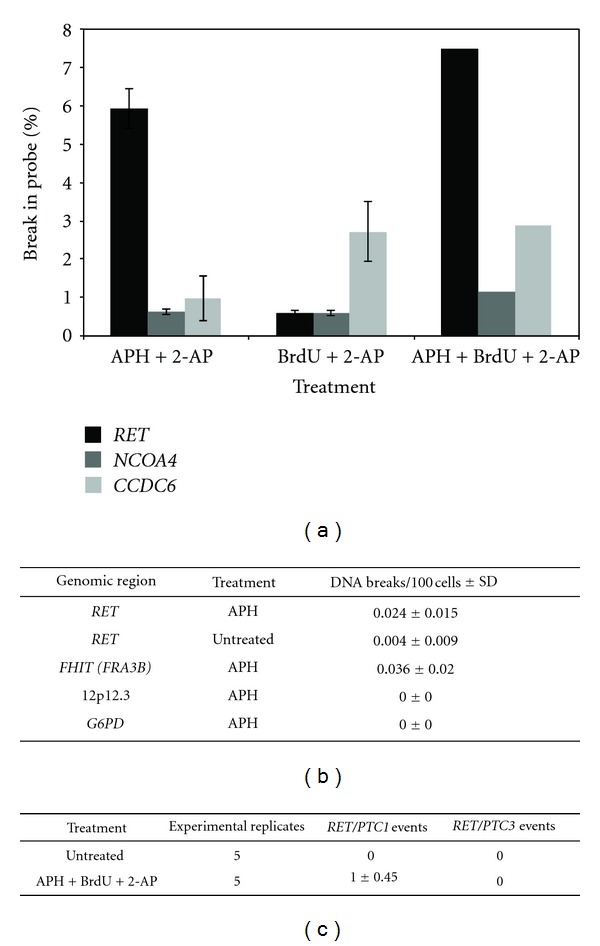Figure 2.

Fragile-site-inducing chemicals generate DNA breakage within RET/PTC genes and RET/PTC1 rearrangements. (a) Percentage of chromosomes showing disruption of RET, NCOA4, and CCDC6 following treatment of HTori-3 cells with fragile-site-inducing chemicals as detected by FISH. Error bars represent standard deviation. (b) The level of DNA breakage in HTori-3 cells at RET intron 11, FHIT intron 4, 12p12.3, and G6PD with or without APH treatment was detected using LM-PCR. (c) The formation of RET/PTC1 or RET/PTC3 rearrangement events was detected in HTori-3 cells using RT-PCR following treatment with fragile-site-inducing chemicals. Five experimental replicates were performed for each treatment and the average number of rearrangements detected per 106 cells per experiment is shown.
